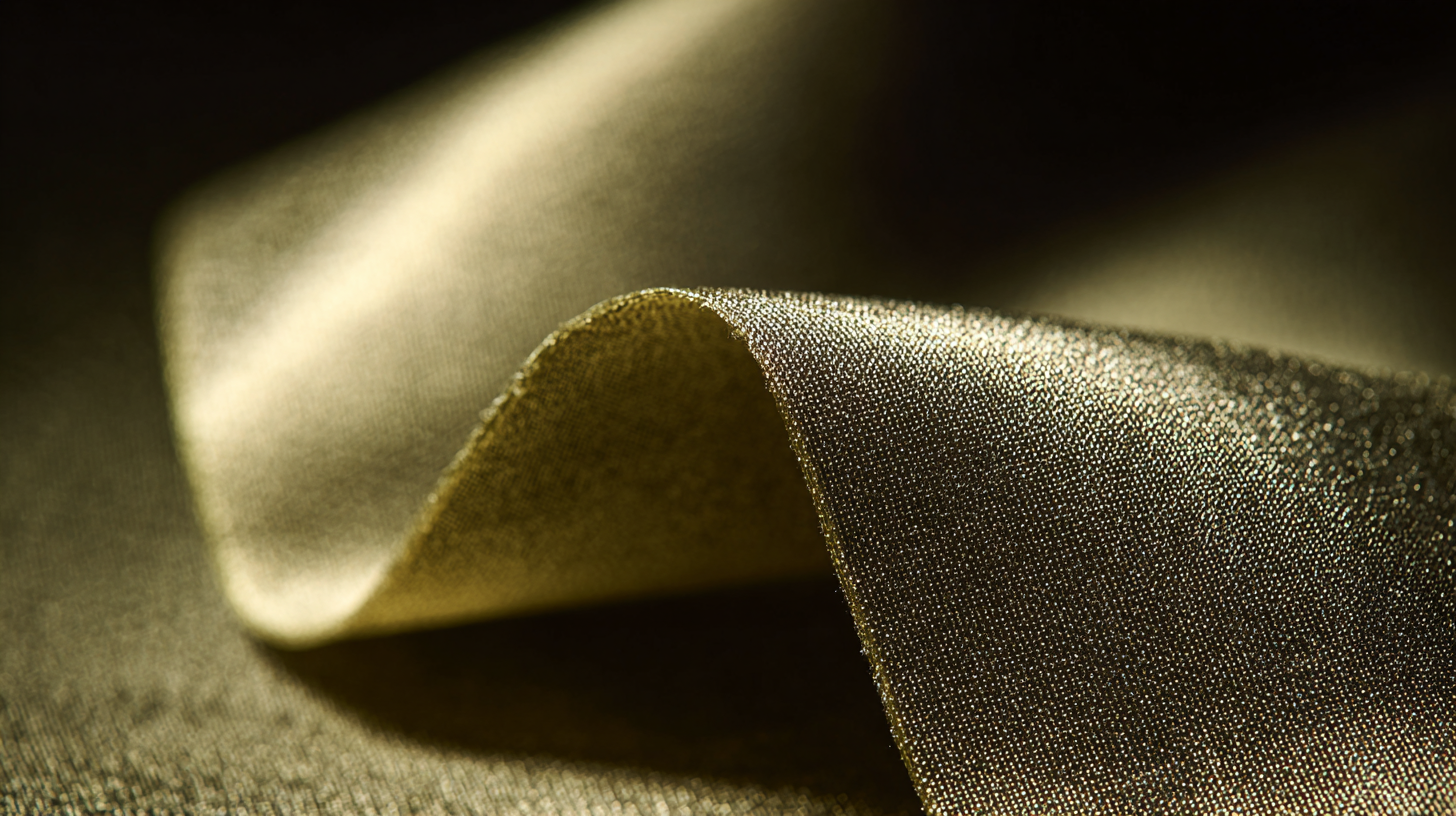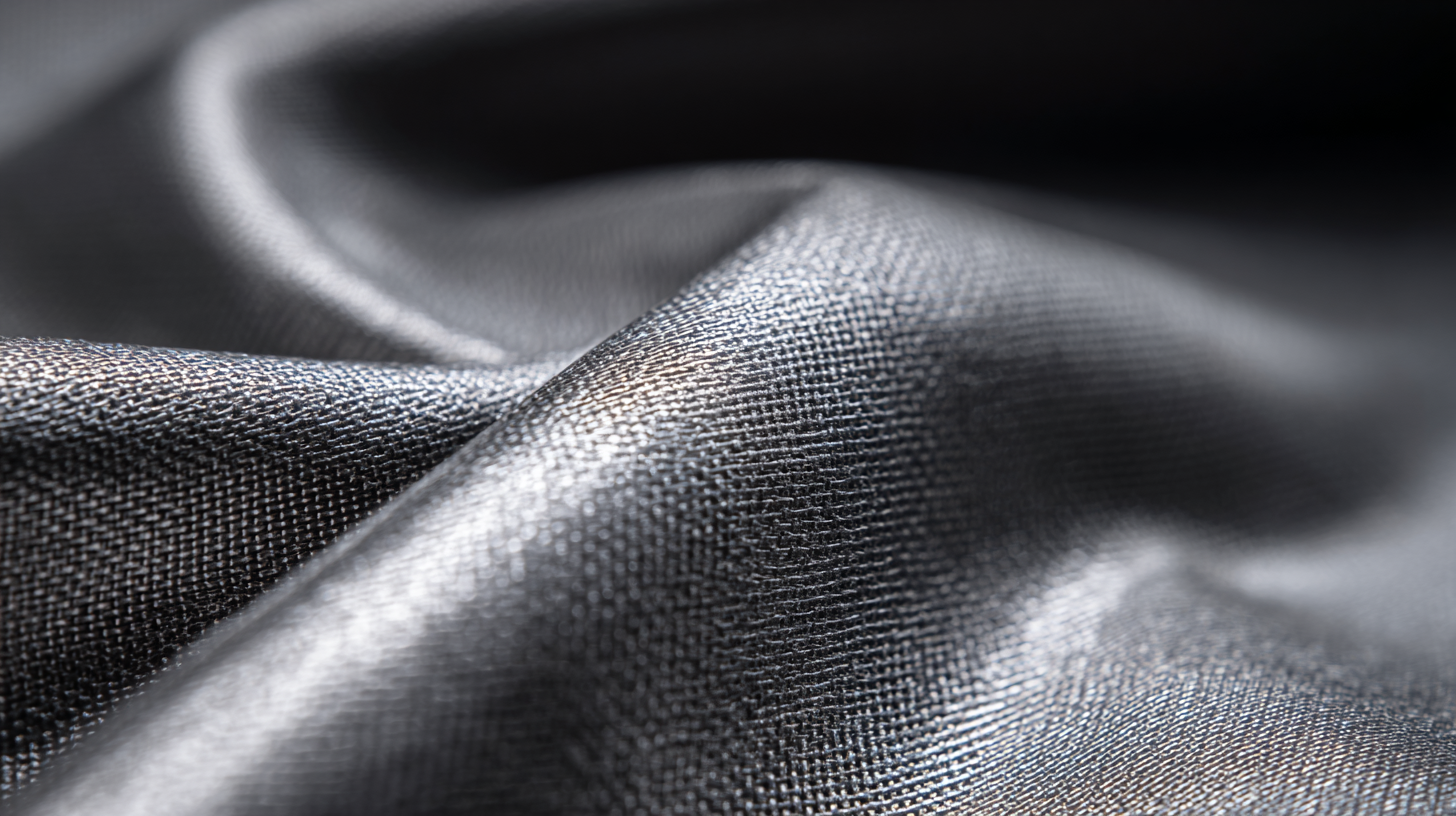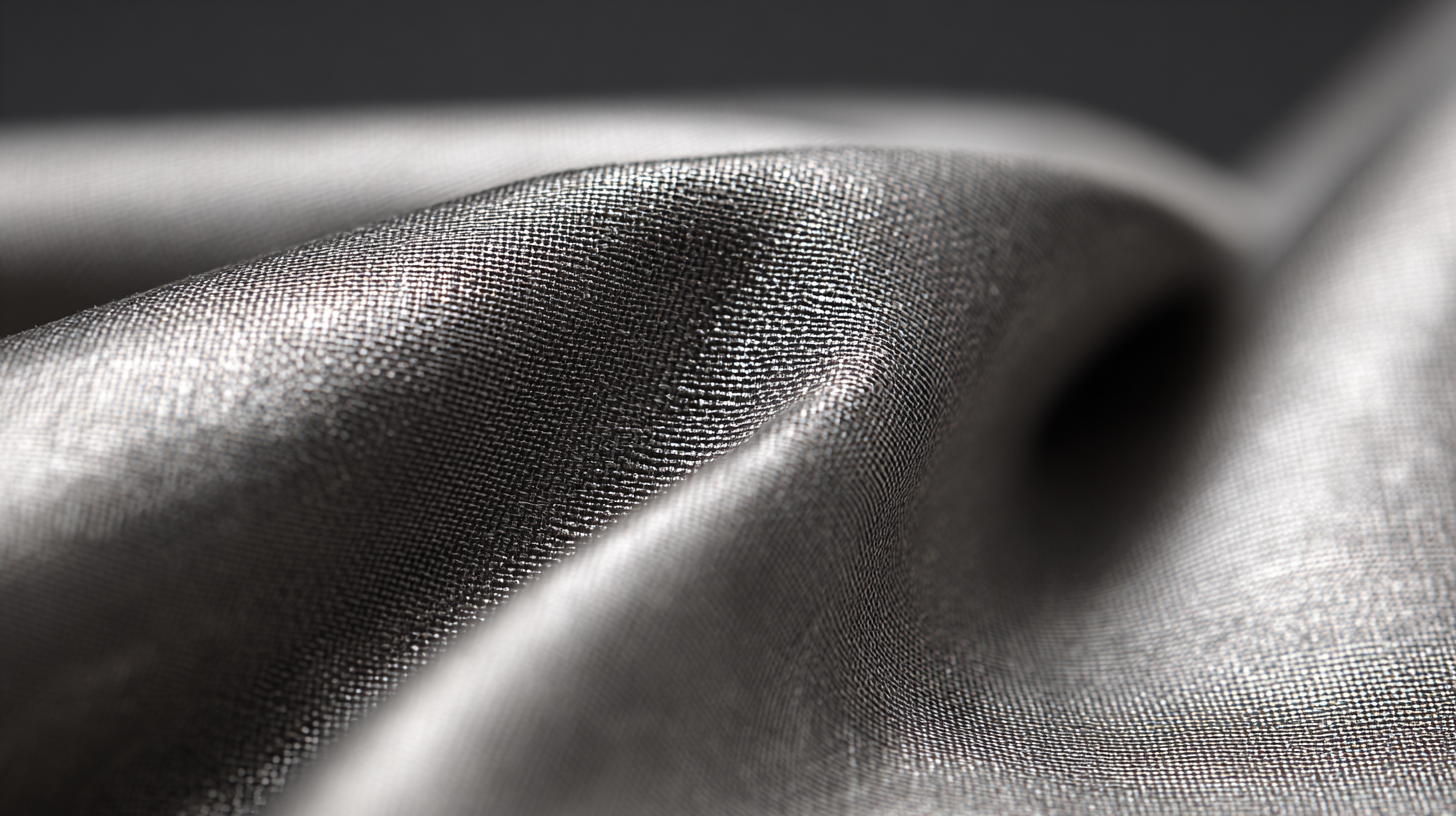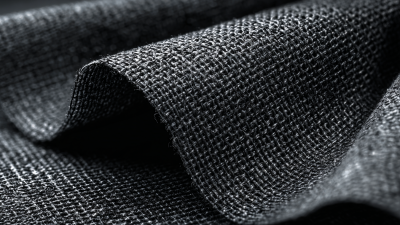Ultimate Checklist for Sourcing the Best Silver Conductive Fabric Worldwide
Table of Contents
- Understanding Silver Conductive Fabric and Its Applications
- Key Factors in Evaluating Silver Conductive Fabric Quality
- Top Manufacturers of Silver Conductive Fabric in China
- Sourcing Strategies for Global Partnerships in Conductive Fabric
- Sustainability and Innovation in Silver Fabric Production
- Tips for Negotiating with Suppliers for Competitive Pricing
- FAQS
- Related Posts
In today's rapidly evolving technological landscape, the demand for high-quality Silver Conductive Fabric is more critical than ever. Selecting the right manufacturer can be a daunting task, given the multitude of options available globally. However, understanding key factors such as material quality, manufacturing capabilities, and customer service can significantly streamline the sourcing process. At Shijiazhuang Shielday Technology Co., Ltd., we pride ourselves on being an advanced manufacturer of high-performance EMI shielding textiles and conductive wires, offering a comprehensive portfolio of products and custom development services. This ultimate checklist aims to equip you with essential insights and solutions for identifying the best Silver Conductive Fabric manufacturers worldwide, ensuring that your sourcing decisions are well-informed and aligned with your specific needs.

Understanding Silver Conductive Fabric and Its Applications
 Silver conductive fabric has gained popularity due to its exceptional conductivity, flexibility, and versatility in various applications. This innovative material is primarily used in electronic textiles, enabling a seamless integration of technology and fashion. From smart clothing that tracks health metrics to conductive gloves that control devices, the possibilities are vast. The inherent properties of silver, such as antimicrobial effects and durability, further enhance the fabric's appeal, making it an ideal choice for both functional and aesthetic innovations.
Silver conductive fabric has gained popularity due to its exceptional conductivity, flexibility, and versatility in various applications. This innovative material is primarily used in electronic textiles, enabling a seamless integration of technology and fashion. From smart clothing that tracks health metrics to conductive gloves that control devices, the possibilities are vast. The inherent properties of silver, such as antimicrobial effects and durability, further enhance the fabric's appeal, making it an ideal choice for both functional and aesthetic innovations.
When sourcing silver conductive fabric, consider these essential tips: First, evaluate the fabric's conductivity level to ensure it meets your specific requirements. Look for test certifications that verify performance. Second, assess the fabric's durability and washing capabilities to guarantee longevity in your applications. Choose suppliers that provide detailed care instructions and performance specs. Lastly, don't overlook the importance of sourcing sustainably. Seek fabrics made through environmentally responsible processes, which not only benefit the planet but also enhance your brand's image.
Thorough research and careful selection will help you navigate the world of silver conductive fabric, ensuring you find the best materials that align with your project needs and values.
Key Factors in Evaluating Silver Conductive Fabric Quality
When sourcing silver conductive fabric, evaluating its quality is paramount. Key factors include conductivity, flexibility, durability, and fabric composition. According to a report by Smithers Pira, the global conductive fabric market is projected to reach $2.1 billion by 2024, highlighting the increasing demand for high-quality materials in various applications, including wearables and smart textiles. The conductivity of silver fabrics typically ranges from 100 to 1,000 S/m, with higher values indicating superior performance and efficiency in electronic applications.

Another critical aspect is the fabric's flexibility and softness, which impacts wearability for end-users. A study by Technavio revealed that flexibility in conductive textiles enhances user comfort, especially in wearable technologies, potentially increasing market growth by 15% annually. Additionally, the durability of the fabric is essential to withstand repeated use and laundering processes without compromising performance. Fabrics with silver nanoparticles or threads designed for longevity tend to outperform traditional alternatives, as indicated in recent research published in the Journal of Materials Science. By focusing on these key factors, manufacturers can ensure they are sourcing top-quality silver conductive fabrics that meet evolving industry standards.
Top Manufacturers of Silver Conductive Fabric in China
When sourcing silver conductive fabric, China stands out as a key player in manufacturing high-quality materials. The country boasts a plethora of established companies that specialize in the production of this innovative fabric, supplying industries ranging from electronics to medical devices. Companies like Hongxing, Garmet, and Fuhua have built a reputation for their commitment to quality and cutting-edge technology. Their extensive experience ensures that customers receive products that meet stringent performance and durability standards.
Tip: Always request samples before making bulk orders. This will give you a clearer understanding of the fabric's conductivity, flexibility, and overall quality. Engaging in direct communication with manufacturers can also provide insights into their production processes and certifications, ensuring that their products align with your specific requirements.
Additionally, when evaluating potential suppliers, consider their production capacity and lead times. A manufacturer with a robust supply chain can better meet your demands, especially in fast-paced industries. Check for customer reviews and case studies to gauge their reliability and customer service, which are equally important for a successful partnership.
Sourcing Strategies for Global Partnerships in Conductive Fabric
When sourcing silver conductive fabric on a global scale, establishing strong partnerships is crucial for success. Engaging with reliable suppliers not only ensures quality but also aids in scaling your production capabilities. One effective strategy is to attend international textile fairs and trade shows. These events provide the perfect platform to connect with manufacturers, explore new technological advancements, and negotiate favorable terms.
Another key approach involves leveraging online marketplaces and industry forums. These platforms often feature reviews and ratings from previous buyers, helping you assess potential suppliers' reliability and product quality. When reaching out to potential partners, focus on transparency about your requirements and expectations. This openness facilitates a stronger collaboration and helps in building trust between parties.
Lastly, always prioritize sustainability and ethical sourcing in your partnerships. As consumers become increasingly conscious of environmental impact, selecting suppliers who adhere to sustainable practices can not only enhance your brand image but also meet the growing demand for eco-friendly products. Inquire about their production methods and certifications to ensure alignment with your values.
Sustainability and Innovation in Silver Fabric Production
In recent years, sustainability has become a crucial aspect of product development, particularly in the textile industry. When it comes to sourcing silver conductive fabric, understanding the methods of production can greatly influence its environmental impact. Innovative practices such as eco-friendly dyeing processes and the use of recycled materials are paving the way for a more sustainable future in fabric manufacturing. Companies are now investing in renewable energy sources and water conservation techniques to minimize their carbon footprint, ensuring that the silver fabric not only meets performance standards but also aligns with global sustainability goals.
Moreover, advancements in technology have significantly transformed the silver fabric production landscape. Innovations such as nanotechnology and advanced weaving techniques are enhancing the fabric’s conductivity while using fewer resources. These developments not only improve the functionality of silver conductive fabric but also reduce waste. By prioritizing sustainable practices and innovative solutions, manufacturers can create high-quality products that cater to the growing demand for environmentally responsible materials. As consumers increasingly consider the ecological impact of their purchases, the push for sustainable silver conductive fabric will likely continue to gain momentum, leading to a greener textile industry.
Tips for Negotiating with Suppliers for Competitive Pricing
When sourcing silver conductive fabric, effective negotiation with suppliers can make a significant difference in securing competitive pricing. One crucial tip is to conduct thorough market research before initiating discussions. Understanding the average price range for the fabric you're sourcing allows you to establish a baseline, enabling you to negotiate from an informed position. This knowledge not only empowers you during the negotiation but also helps you identify suppliers who offer the best value for your budget.
Another key strategy is to foster a mutually beneficial relationship with your suppliers. Open communication is essential; consider discussing your long-term plans and how they might benefit from a continued partnership. Highlighting potential for bulk orders or future projects can incentivize suppliers to offer you better pricing. Additionally, don’t hesitate to ask for discounts, especially if you’re willing to commit to a larger order or establish a regular supply chain. By combining thorough research with relationship-building, you can navigate supplier negotiations more effectively and achieve the best possible pricing for silver conductive fabric.
FAQS
: Silver conductive fabric is a material that incorporates silver to provide exceptional conductivity, flexibility, and versatility, making it ideal for various applications, particularly in electronic textiles.
Silver conductive fabric is used in a variety of applications such as smart clothing for health tracking, conductive gloves for device control, and other innovations that merge technology with fashion.
Its popularity stems from its superior conductivity, flexible nature, versatility, antimicrobial properties, and durability, which enhance both functionality and aesthetics.
Evaluate the fabric's conductivity level, durability, washing capabilities, and ensure the supplier provides test certifications and detailed care instructions. Also, consider sourcing sustainably.
Notable manufacturers in China include Hongxing, Garmet, and Fuhua, known for their high-quality products and commitment to advanced technology in production.
Always request samples prior to making bulk orders to assess the fabric’s conductivity, flexibility, and overall quality, and communicate directly with manufacturers to understand their processes and certifications.
Sourcing sustainably benefits the planet and enhances your brand's image, contributing to responsible consumption and production practices, which are increasingly valued by consumers.
Customer reviews and case studies provide insights into the reliability and customer service of suppliers, which are critical for establishing a successful partnership.
A manufacturer's production capacity and lead times are important, as they indicate their ability to meet your demands, especially in fast-paced industries requiring timely delivery.
Look for test certifications that verify the fabric's performance and conductivity to ensure it meets your specific application requirements.
Related Posts
-

How to Navigate Import and Export Certifications for Best Conductive Tape
-

Unmatched Manufacturing Excellence: Discover the Best High Temp Resistant Sleeves from China's Leading Factory
-

Exceptional Tinned Tinsel Wire Manufacturing in China for Global Buyers
-

2025 Industry Trends in Firefighting Apparel: How to Choose the Best FR Clothing for Safety
-

10 Industry Standards for Best Fire Resistant Fabric and 7 Reasons to Choose Them
Blog Tags:

